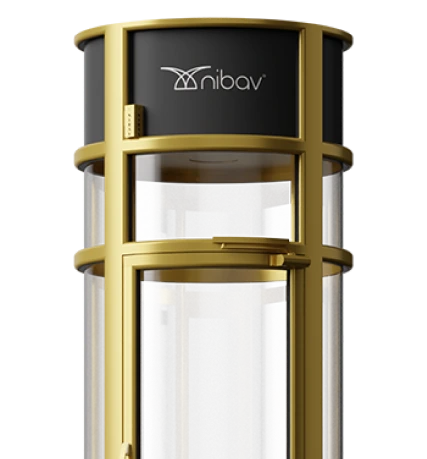Home elevators serve functional and safety purposes, providing accessibility standards and added security benefits. Because of increased accessibility needs and an aging population, modern life requires residential elevators as an essential component. Residential elevators establish a protected path for users, reducing the risk of stairwell delays or accidents.
The primary benefit of residential elevators becomes apparent when serving the needs of senior populations and disabled individuals. Modern elevators include home elevator safety features, and advanced elevator technologies guarantee damage-free operation.
This article details the vital safety elements and the latest technical innovations that make residential elevators trustworthy for household applications.
Understanding Home Elevator Safety Standards.
Industry Standards
Home elevators must comply with global and local safety laws to work effectively and securely. Safety standards established by the American Society of Mechanical Engineers (ASME) and European safety laws specify critical design and operational criteria.
These requirements emphasize structural integrity, emergency readiness, and general reliability. Compliance with these standards is essential for preventing malfunctions and ensuring passenger safety.
Importance of Compliance
Compliance with safety requirements is not negotiable. It reduces operating hazards, increases durability, and guarantees that house elevators run well under all conditions.
Elevators not meeting compliance standards can have multiple critical issues, such as unexpected stops, door issues, and mechanical system breakdowns. By following industry standards, companies ensure both performance longevity and reduced possibilities for hazardous incidents.
Role of Professional Installation and Maintenance
A correctly placed house elevator ensures optimum functionality. Professional installation guarantees that all components work properly and fulfill safety requirements. Vehicle maintenance becomes essential because it stops ordinary breakdowns from developing into major failures.
The routine inspection of brake systems, electrical components, and emergency features belongs to certified technicians who verify vehicle safety and operational efficiency.
Key Safety Features in Modern Home Elevators
Emergency Stop Buttons
Emergency stop buttons are strategically positioned throughout the elevator cabin. These buttons allow passengers to instantly stop the elevator if they notice a problem or feel uncomfortable. This function prevents possible mishaps and keeps users in control during emergencies.
Overload Protection
Modern house elevators have weight sensors that detect when the load surpasses the maximum limit. If the load limit is exceeded, the mechanism stops the elevator from moving, lowering the danger of mechanical strain and failures. This safety element protects both the passengers and the elevator’s internal mechanics.
Door Safety Systems
Advanced house elevators come with automated door safety features. These systems feature sensors that detect items or people obstructing the entrance. If an obstacle is discovered, the elevator door will not close. Some types additionally have interlocking devices that keep the doors locked while the elevator is in motion.
Fire Safety Features:
Fire-rated doors, smoke detectors, and automatic shut-off systems are critical fire safety elements in residential elevators. These components contain flames and prevent smoke from entering the elevator shaft. Furthermore, specific versions include automated return-to-floor technology, which directs the elevator to a particular floor in the event of a fire.
Smooth, controlled movement.
A quality elevator should offer a smooth trip without abrupt jerks or pauses. Advanced elevator technologies, such as high-quality motors and speed control, provide progressive acceleration and deceleration, improving user comfort and safety. A well-designed control system lowers mechanical strain, extending the elevator’s lifespan.
Advanced Safety Technologies
Obstacle Detection Systems
Infrared and ultrasonic sensors are important for identifying objects or people in the elevator’s route. If an obstruction is spotted, the elevator immediately stops. This function is especially handy for families with youngsters or elderly people who may unintentionally hinder the elevator’s progress.
Intelligent Monitoring Systems
Smart house elevators have clever monitoring systems that track performance in real time. When an issue arises, these systems notify homeowners and maintenance providers. Predictive maintenance technology may also evaluate performance data to identify probable problems before they occur, reducing downtime and repair costs.
Accessibility Features:
Elevators should be accessible to everyone, including those with impairments. Elevator technologies for seniors include accessible features such as voice controls, Braille buttons, and automatic doors to improve their use.
Some versions additionally have remote control functionality, which allows caretakers or family members to manage the elevator remotely for increased convenience.
Choosing a Safe and Reliable Home Elevator
Research and Due Diligence
Before buying a house elevator, homeowners should do extensive study. Comparing companies, checking user reviews, and validating certifications are necessary to choose a safe and dependable model. Evaluating a manufacturer’s reputation and track record in the business assures that the selected elevator fulfills the highest safety requirements.
Professional Consultation
Consulting with an expert enables homeowners to understand better the many home elevator safety features and technology available. Professionals may evaluate the home’s layout and propose the most appropriate elevator type. Furthermore, they may advise on the finest safety modifications for individual demands, providing maximum security.
Regular Inspections and Maintenance
Elevator safety features rely on scheduled inspections and routine maintenance procedures to ensure proper functionality. Qualified technicians perform detailed examinations of essential components, including cables, motors, and emergency systems. Testing small issues through preventive maintenance helps avoid major system breakdowns during operations, thus ensuring proper elevator operation.
Conclusion
Home elevators combine convenience and safety, making them a good investment for modern families. Safety features like emergency stop buttons, obstacle detection systems, and intelligent monitoring improve user safety.
Compliance with industry standards and competent maintenance ensure long-term reliability. Choosing a high-quality house elevator with advanced elevator technologies for seniors ensures homeowners’ peace of mind and a safe living environment.
What are the most common safety concerns with home elevators?
Three general elevator issues are door malfunctions, weight overload problems, and mechanical breakdowns. Regular maintenance and strict adherence to safety standards can reduce these risks and ensure the elevator runs seamlessly and safely.
What should I do in case of an emergency in my home elevator?
When a home elevator emergency occurs, users should press the emergency stop button and initiate the built-in communication system to contact assistance. Stay calm and do not try to leave the elevator while waiting for trained aid to reach them.
How do advanced technologies enhance home elevator safety?
Advanced elevator technologies such as obstacle detection, intelligent monitoring, and emergency backups improve reliability. These innovations prevent accidents, enhance user safety, and ensure that home elevators operate efficiently under all conditions.
What are the benefits of professional installation and maintenance?
Expert installation ensures that all home elevator safety features function correctly from day one. Routine maintenance prevents unexpected failures, extends the elevator’s lifespan, and enhances overall user security, offering homeowners peace of mind.




